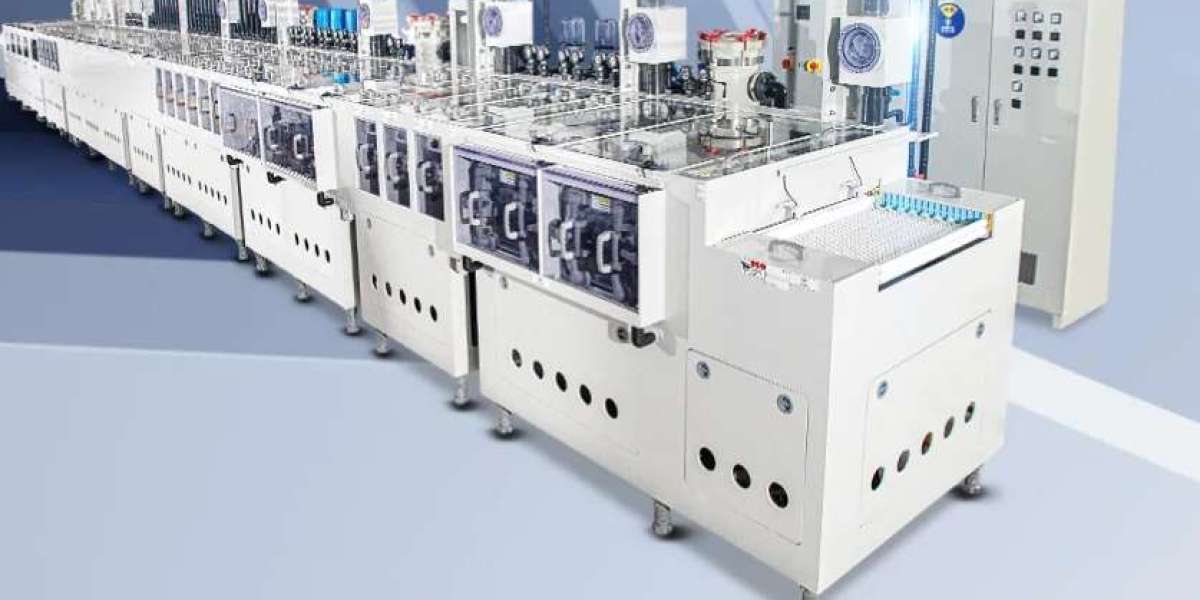In the production process of the super roughening process machine, the component assembly stage (such as mechanical structure assembly, electrical connection and other basic assembly work) is usually the easiest to control stage, but it needs to be analyzed in combination with specific production conditions. The following is an explanation based on the comparison of control difficulties and their causes in different links:
I. Comparison of Control Difficulty in Each Link
Component assembly stage
Low control difficulty
High degree of standardization: Mechanical structure assembly (such as frame splicing, pipe connection) and electrical wiring (such as sensor and motor wiring) are usually guided by clear process documents and drawings. Operators only need to follow the steps.
High fault tolerance: If dimensional deviations or connection errors of parts are found during assembly, they can be promptly reworked and corrected, having a relatively small impact on overall production.
Less reliance on equipment: Mainly relies on tools (such as wrenches, screwdrivers) and simple equipment (such as wire crimping pliers), without the need for complex parameter adjustments.
Etching process control link
High control difficulty
Parameter sensitivity: Parameters such as the concentration of the etching solution, temperature, and spray pressure need to be controlled. Even minor deviations may lead to uneven etching or over-etching.
Real-time monitoring requirements: It is necessary to continuously monitor the status of the etching solution (such as copper ion concentration, PH value) and make dynamic adjustments, relying on high-precision sensors and an automated system.
Strong reliance on experience: The etching processes for different materials (such as stainless steel and copper) vary greatly, and it is necessary to rely on the experience of technicians to optimize parameters.
Equipment debugging and testing phase
Moderate control difficulty
Dependent test standards: Verification must be carried out in accordance with industry standards (such as etching rate, uniformity test), but the test results are affected by the initial assembly and process control.
Problem troubleshooting is complex: If performance is found to be substandard during debugging, it is necessary to trace back to the assembly or process stage for troubleshooting, which increases the complexity of control.
Design and research and development stage
High control difficulty
High technical threshold: It is necessary to integrate knowledge from multiple disciplines such as materials science and fluid mechanics to design key components like the etching cavity structure and the spray system.
Long verification cycle: Design flaws may lead to production problems in the later stage and require repeated optimization through simulation or prototype testing.
Ii. Reasons why the assembly process of components is easy to control
Process standardization
Assembly processes usually have detailed operation instructions (Sops), and operators only need to follow the steps to reduce human errors.
The tools and equipment are simple
The assembly process mainly relies on general-purpose tools (such as torque wrenches and multimeters), without the need for complex equipment or high-precision control.
Fault tolerance and correction mechanism
If any incorrect installation of parts is found (such as the sensor being installed in the wrong direction), immediate rework and correction can be carried out, which will not have a fundamental impact on subsequent processes.
The personnel training period is short
The assembly process has relatively low requirements for the skills of operators. After a short period of training, they can be on the job, reducing the control difficulty caused by personnel factors.
Iii. Conclusion
The most controllable link: the component assembly link, due to its high degree of standardization, strong fault tolerance, and simple reliance on equipment, is suitable for achieving efficient control through standardized operations and short-term training.
The key focus is on the etching process control stage. Due to its parameter sensitivity and real-time monitoring requirements, it needs to be jointly guaranteed by an automated system, high-precision sensors, and experienced technicians.
Manufacturers can further reduce control difficulty by optimizing the assembly process (such as introducing error-proof design and standardized tools), and at the same time focus resources on the research and development and optimization of etching processes to enhance overall production efficiency and product quality.
super roughening process machine https://www.jxxr-pcb.com/Medium-Roughening-Machine-Super-Roughening-Machine.html






